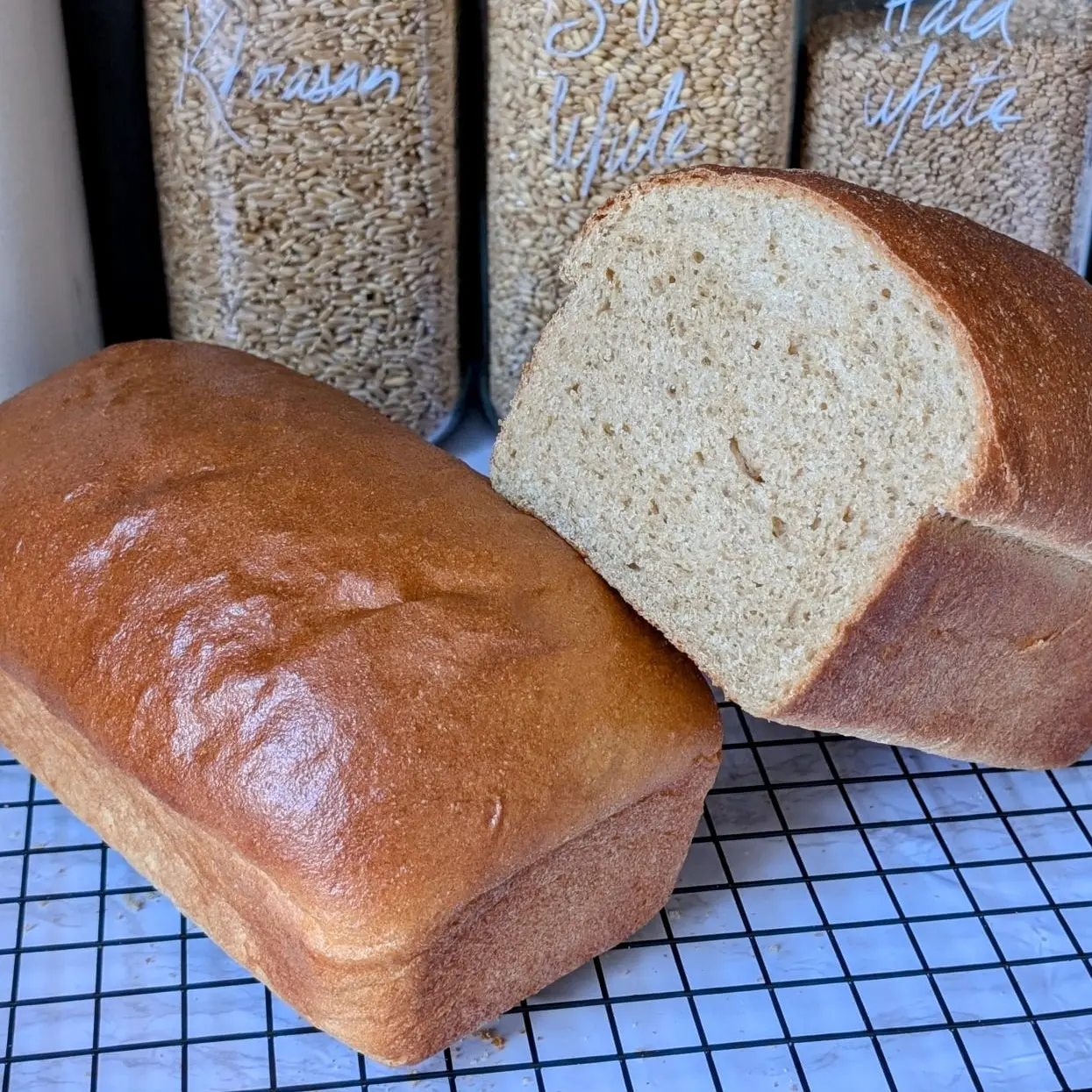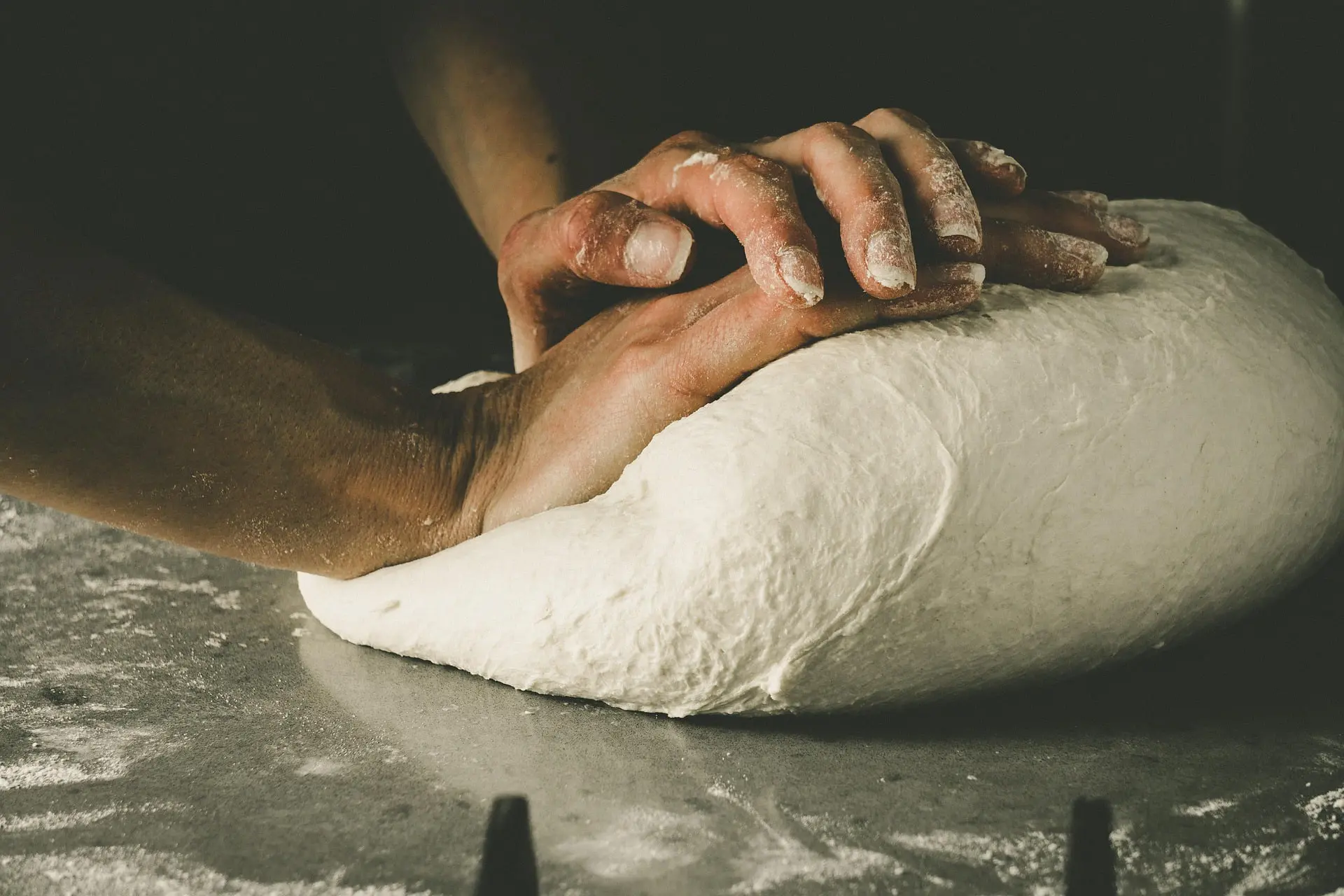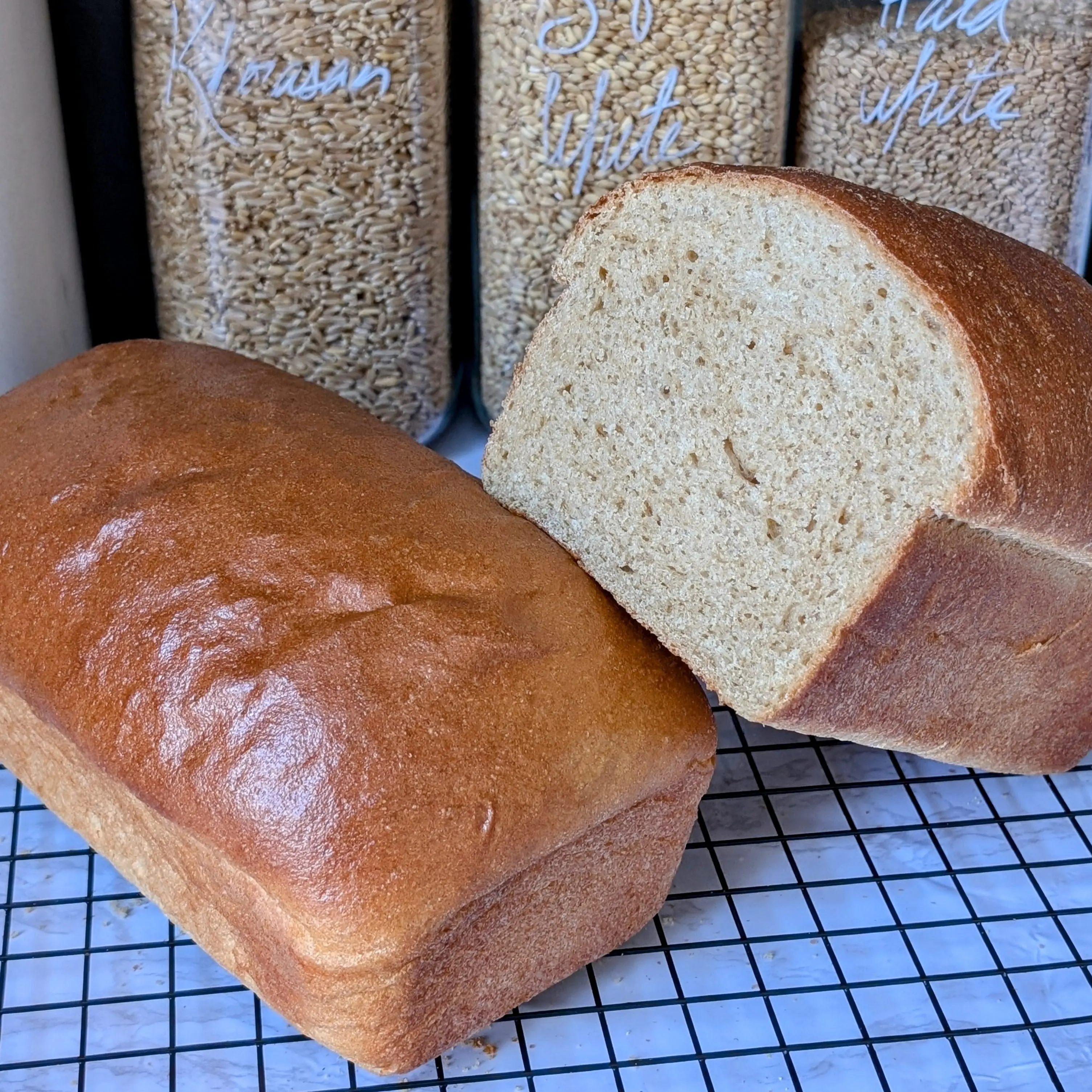
Perfect FMF Sandwich Bread
Ingredients for 1 loaf
400g hard white wheat
40g kamut
15g vital wheat gluten (optional but improves the texture)
264g warm water
32g honey (or 12g sugar)
1 egg
5g white vinegar
60g (4Tbsp) soft butter
8g yeast
9g salt

Ingredients for 1 loaf
400g hard white wheat
40g kamut
15g vital wheat gluten (optional but improves the texture)
264g warm water
32g honey (or 12g sugar)
1 egg
5g white vinegar
60g (4Tbsp) soft butter
8g yeast
9g salt
Set your mill to the finest setting and pour in your grain. Feel free to play around with different grain combinations but it is essential that you use a grain with a high protein content. Soft wheat will not form a good gluten structure leading to a soppy mess that will be impossible to shape, and a solid mass when baked. I recommend Hard Red or Hard White for the majority of the flour and add a secondary wheat (like Kamut) if you would like to add a different flavor in small amounts.
To the flour add your vital wheat gluten if you are using it. You can absolutely leave this out but I prefer the texture of my sandwich bread to be a bit stretchy rather than crumbly. Crumbly texture was my biggest issue with FMF products and Vital Wheat Gluten was the game changer for me!
Autolyse is simply mixing your flour with the wet ingredients and allowing it to rest for about 30 minutes to allow the flour to absorb the water and soften the bran and germ. You will also allow the gluten to form a bit more gently and give the final product a more open crumb. DO NOT skip this step! The bran and germ are hard and will cut the gluten while you knead preventing you from getting a properly developed gluten structure.
Combine the water, sugar or honey, egg and vinegar in a separate bowl. Wisk until combined and pour into the dry ingredients. Mix until a shaggy dough forms, cover and allow to rest for 30 minutes or longer if you need to step away. I have left this for two hours with no trouble so this step is very flexible. Because we have not added the yeast yet we are not beginning the rise time so the dough will be just fine to rest while you run errands or do dishes. I tend to mill and mix in the wet ingredients first thing in the morning before getting the kiddos up for the day and allowing it to rest while we have breakfast and get ready for the day. By the time we are all up and fed the dough is ready for kneading while the littles play.
I will also weigh out and set on top of the covered dough; my butter, yeast and salt before leaving the dough to rest. I can not tell you have many times I have been halfway through kneading and realized I forgot to add the yeast in...
This is the step I tend to see people have the most issue with FMF. Allowing the dough to autolyse is essential to a successful kneading step but there are also a few tips I have found to achieving the perfect windowpane. FMF loves a high hydration recipe but it can be difficult to work with if you do not have experience with high hydration or sourdough techniques. I find, even with a yeast recipe, I will need to do slap and folds which is typically seen as a sourdough technique.
Add your butter, yeast and salt. I add the butter at this point because if you add it before the autolyse step, it will coat the flour and prevent it from properly absorbing the water. Now you will knead until a window pane is achieved. If you are familiar with yeast breads, kneading is a familiar step but a window pane, while achievable, is not required for a good final product. Fresh milled flour is a bit more sensitive to being properly kneaded. I like to have a kitchen aid but unfortunately while a beast with pastries, it does not do as well with the dough hook. I have only had success if I have a double or triple batch in my six quart mixer. If there is not enough dough it will end up just going for a ride around the bowl instead of actually being worked. This dough is actually very easy to knead by hand as I have tailored the hydration to not be so high as to be super sticky while still sufficiently hydrating the flour. I do not add flour on my board or hands when kneading. this will just add too much flour to your dough and change the hydration levels. Instead I use a combination of traditional kneading and slap and folds if it is starting to get sticky and stick to the board. If you have a Bosch or Ankarsrum mixer I have never heard of anyone having issues but you can ablsolutely acheive the same results in a kitchen aid or by hand.

Once you have achieved a window pane, place the dough into a greased bowl and cover with a damp towel or plastic wrap. Set in a warm place and allow to rise until doubled, about 1 hour. Once the dough is doubled, punch down and turn onto your surface. I do not flour the surface as this can prevent the dough from shaping into a taut loaf. Use a bench scraper if the dough sticks at first.
Click here for a video on shaping sandwich loaves. Gently stretch the dough into a large rectangle roughly 12x15. Fold the short end in about a third of the way and then fold the other end over top creating a letter fold. Now take the short end of your folded dough and begin to roll it up like a jelly roll, pulling it tightly. Pinch the ends and tuck them under. Pull your dough towards you, using the friction of the counter to create a taut log. Place it into a greased and parchment lined loaf pan.
I like to cut my parchment paper into a 8x"however wide your roll is" strip, and put that into the loaf pan to use as a sling to lift the dough out.
Cover your loaf pan with the dough with an upside-down loaf pan and allow it to rise until it is 2-3 inches above the pan. This can take anywhere from 1-3 hours depending on the temperature of your kitchen. Please allow sufficient time as there is not much oven spring from this loaf so this will ensure you have light and fluffy sandwich bread!

Towards the end of your second rise, preheat your oven to 350. If you wish, brush the loaves with either cream or an egg wash. You can leave it dry if you'd prefer but I like to have a nice glossy finish. Place the loaves into the preheated oven and bake until a digital thermometer reads 200 degrees. DO NOT go off of just the color. The easiest way to ensure your loaves are done is to take the temperature. This should take about 35 minutes.
Immediately remove the loaf from the pan using the parchment sling. Peel the parchment off and allow to cool completely on a wire rack. Try to resist slicing it while hot! I know, I know... it's hard to resist but trust me; after all this work you don't want to end up with a gummy crumb! It is fine to slice while warm but bread continues to cook for the first bit after removing them from the oven so leave it alone while it is piping hot!
Offline Website Software